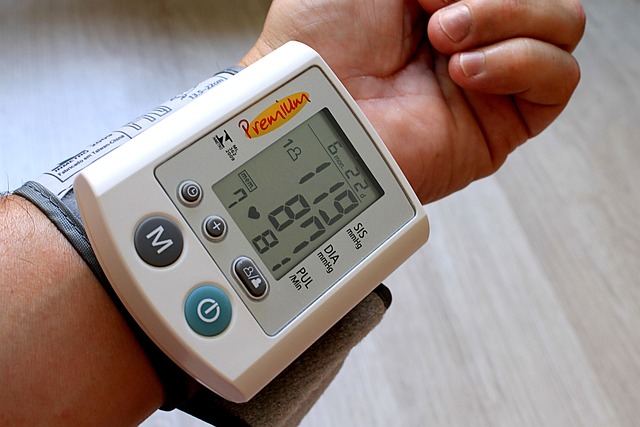Check your blood pressure category instantly
Blood pressure is one of the most important indicators of cardiovascular health. Enter your systolic and diastolic values below to see how they compare to international guidelines (ACC/AHA – US and ESC/ESH – EU). The calculator also provides your mean arterial pressure (MAP) and pulse pressure (PP) for a deeper understanding of your results.
⚠️ This tool is for informational purposes only and does not replace professional medical advice. Always consult your doctor for diagnosis and treatment.
Blood Pressure Risk Calculator
Classification (ACC/AHA & ESC/ESH)
ESC/ESH: Optimal (<120/<80), Normal (120–129 and/or 80–84), High-Normal (130–139 and/or 85–89), Grade 1 (140–159 and/or 90–99), Grade 2 (160–179 and/or 100–109), Grade 3 (≥180 and/or ≥110). Isolated systolic: SBP ≥140 & DBP <90.
Blood pressure is one of the most widely measured health parameters in the world. Yet despite how common it is, many people don’t really understand what those numbers mean, why they matter, or how they affect long-term health. High blood pressure, or hypertension, is often called the “silent killer”, because it rarely causes symptoms until it has already damaged vital organs such as the heart, kidneys, brain, or eyes.
This guide will help you make sense of your results from the Blood Pressure Risk Calculator. We’ll look at what systolic and diastolic mean, how different organizations classify results, what MAP and pulse pressure tell you, and—most importantly—what you can do to keep your blood pressure in a healthy range.
What is blood pressure?
Every time your heart beats, it pushes blood into your arteries. The pressure this creates is called systolic pressure. Between beats, when the heart rests and refills, the pressure drops—this is the diastolic pressure. Both numbers matter, and both are measured in millimeters of mercury (mmHg). A “normal” blood pressure is often written as 120/80 mmHg.
Why it matters so much
Think of your arteries as flexible pipes. If the pressure inside them is constantly too high, the walls stiffen and get damaged, making it easier for cholesterol to build up. Over time, this raises your risk for heart attack, stroke, kidney failure, and even vision problems. On the other hand, if the pressure is too low, your organs might not get enough oxygen-rich blood.
Keeping blood pressure in the right range is one of the best things you can do to stay healthy for the long run.
How to measure blood pressure correctly
A good reading depends on how you measure. Sit in a chair with your feet flat on the floor and your back supported. Rest quietly for at least five minutes. Make sure the cuff fits your arm properly. Avoid smoking, coffee, or exercise for at least 30 minutes beforehand. And don’t rely on just one reading—take two or three and average them. That’s why our calculator lets you enter three readings and gives you an average.
US vs. European guidelines
Different health organizations use slightly different categories.
In the United States, the ACC/AHA says:
-
Normal: less than 120/80
-
Elevated: 120–129 systolic and under 80 diastolic
-
Stage 1 hypertension: 130–139 systolic or 80–89 diastolic
-
Stage 2 hypertension: 140 or higher systolic, or 90 or higher diastolic
-
Hypertensive crisis: 180 or higher systolic, or 120 or higher diastolic
In Europe, the ESC/ESH guidelines use categories such as optimal, normal, high-normal, and grades 1–3 of hypertension. They also recognize isolated systolic hypertension, which means the top number is high while the bottom number stays normal.
Going beyond the numbers: MAP and pulse pressure
Our calculator also shows mean arterial pressure (MAP) and pulse pressure (PP). MAP is the average pressure in your arteries over a full heartbeat cycle. It’s calculated as systolic plus twice the diastolic, divided by three. Normal MAP is roughly 70–100 mmHg.
Pulse pressure is simply the difference between systolic and diastolic. A typical value is around 40 mmHg. A much wider or narrower pulse pressure can be a sign of problems with heart function or stiff arteries.
How common is hypertension?
High blood pressure affects billions of people worldwide. In the US, nearly half of adults have it, and only about one in four manage to keep it under control. In Germany, about a third of adults live with hypertension, with the numbers rising steeply after age 60. Many parts of Europe, including Hungary, have even higher rates, and cardiovascular disease remains the leading cause of death.
The big problem is that most people don’t feel any symptoms until serious damage has already occurred. That’s why awareness and regular checks are so important.
What raises your risk
Some factors you can’t control—like age, family history, or genetics. But many others are lifestyle-related: too much salt, excess body weight, lack of exercise, smoking, drinking too much alcohol, high stress, and poor sleep. Diabetes and high cholesterol also raise the risk.
The good news: improving these habits can have a huge impact on your numbers.
What happens if you ignore it
Leaving high blood pressure untreated slowly damages your organs. It can cause the heart to enlarge and fail, the brain to suffer strokes, the kidneys to fail, the eyes to lose vision, and arteries to balloon into aneurysms. In fact, for every 20 mmHg increase in systolic or 10 mmHg increase in diastolic, your risk of death from heart disease or stroke roughly doubles.
Lifestyle changes that really work
Doctors often recommend lifestyle changes before medication—or alongside it. Some of the most effective strategies are:
-
Following the DASH diet (fruits, vegetables, whole grains, low-fat dairy)
-
Cutting salt intake (ideally below 1,500–2,300 mg sodium per day)
-
Exercising regularly (at least 150 minutes of moderate activity per week)
-
Losing weight (even 5–10% of body weight helps)
-
Limiting alcohol
-
Quitting smoking
-
Getting good sleep and treating sleep apnea
-
Managing stress with relaxation techniques, yoga, or mindfulness
Medications that help
Sometimes lifestyle changes aren’t enough, and medication is needed. Common options include diuretics, ACE inhibitors, ARBs, calcium channel blockers, and beta-blockers. Your doctor will choose based on your specific risk factors and other health conditions. Many people eventually take more than one drug to keep their blood pressure in check.
The role of technology
Today, it’s easier than ever to track your blood pressure at home. Affordable digital monitors provide accurate readings if used correctly. Some smartwatches can estimate blood pressure or at least detect irregular rhythms. Cloud-connected devices can even share data with your doctor. Still, the gold standard remains validated upper-arm monitors.
Blood pressure through different life stages
Blood pressure issues don’t look the same for everyone. In children and teenagers, values are judged against age, sex, and height percentiles. In older adults, stiff arteries make isolated systolic hypertension common, and treatment targets may be adjusted to prevent dizziness or falls. During pregnancy, high blood pressure can lead to serious complications such as preeclampsia, so special monitoring is required.
Common questions
Can high blood pressure cause symptoms? Usually not—it’s silent until it’s severe.
How often should I measure? Normal readings: once or twice a year. Elevated: monthly. Hypertensive: daily or weekly until stable.
Does stress alone cause hypertension? Stress spikes BP temporarily, but it’s usually lifestyle habits under stress that cause long-term problems.
What about coffee? Caffeine can raise BP briefly, but regular drinkers often build tolerance. Moderation is key.
Is high blood pressure reversible? It can usually be controlled with lifestyle and medication, though artery stiffness may not fully reverse.
Key takeaways
Blood pressure is a vital indicator of your health. Both systolic and diastolic values matter. Our calculator helps you see how your numbers compare under both US and European guidelines, and the extra metrics MAP and PP give deeper insight. Hypertension is common, dangerous, but very manageable with the right steps.
Knowing your numbers is empowering. By checking your blood pressure regularly and understanding what the results mean, you take control of one of the most important factors for long-term health. Use the Blood Pressure Risk Calculator to learn where you stand today, and then take action—whether it’s improving your diet, moving more, or talking to your doctor about treatment. Small steps now can prevent serious problems in the future.
Your heart, your brain, and your whole body will thank you.
Image(s) used in this article are either AI-generated or sourced from royalty-free platforms like Pixabay or Pexels.
Did you enjoy this article? Buy me a coffee!






